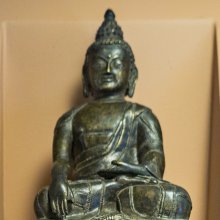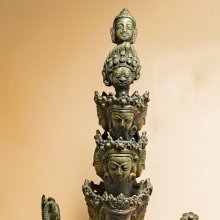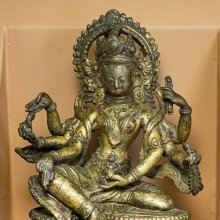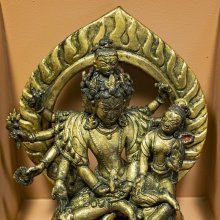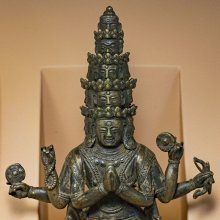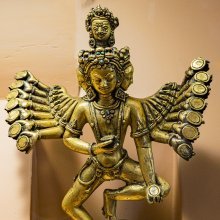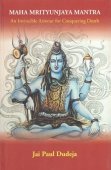Thunderbolt: 1 definition
Introduction:
Thunderbolt means something in Hinduism, Sanskrit. If you want to know the exact meaning, history, etymology or English translation of this term then check out the descriptions on this page. Add your comment or reference to a book if you want to contribute to this summary article.
Images (photo gallery)
(+36 more images available)
In Hinduism
Yoga (school of philosophy)
Source: ORA: Amanaska (king of all yogas): A Critical Edition and Annotated Translation by Jason BirchThunderbolts (in Sanskrit: Vajra) do not hurt those students of Yoga having practiced for over six years, according to the Śivayogadīpikā, an ancient Sanskrit text dealing with Yoga possibly corresponding to the Śivayoga quoted in Śivānanda’s Yogacintāmaṇi.—Accordingly, [while describing a sequence of Haṭhayoga practices]: “Thus, by means of this Haṭhayoga which has eight auxiliaries, those [students who are] life-long celibates obtain the Siddhis of the [best of Sages] because of their untiring practice. [...] In the fifth year, he has clairaudience, the Siddhi of speech and [the power to] enter the bodies of other [beings]. Within six [years,] he cannot be pierced by even a thunderbolt (vajra), he can move extremely quickly and has clairvoyance. [...]”.

Yoga is originally considered a branch of Hindu philosophy (astika), but both ancient and modern Yoga combine the physical, mental and spiritual. Yoga teaches various physical techniques also known as āsanas (postures), used for various purposes (eg., meditation, contemplation, relaxation).
See also (Relevant definitions)
Partial matches: Thunderbolt, Te.
Starts with: Thunderbolt flower.
Query error!
Full-text (+972): Vajra, Pavi, Asani, Kulisha, Vajrapata, Indrapraharana, Mridakara, Dambholi, Shatadhara, Shatakoti, Dadhicyasthi, Meghabhuti, Bhidura, Shatahrada, Samva, Bahudhara, Bhidra, Svaru, Ribhuksha, Vajrapani.
Relevant text
Search found 215 books and stories containing Thunderbolt, Salama, The thunderbolt, Thunderbolts; (plurals include: Thunderbolts, Salamas, The thunderbolts, Thunderboltses). You can also click to the full overview containing English textual excerpts. Below are direct links for the most relevant articles:
Brihat Samhita (by N. Chidambaram Iyer)
Chapter 36 - Signs of Aerial City (gandharvanagara-lakṣaṇa)
Chapter 13 - On the constellation of Saptarṣi (seven Ṛṣis or Sages)
Garga Samhita (English) (by Danavir Goswami)
Verse 8.13.127 < [Chapter 13 - A Thousand Names of Lord Balarāma]
Verse 1.7.32 < [Chapter 7 - Description of the Conquest of All Directions]
Verse 3.2.25 < [Chapter 2 - The Great Festival of Śrī Girirāja]
Mahabharata (English) (by Kisari Mohan Ganguli)
Brahma Purana (critical study) (by Surabhi H. Trivedi)
Appendix 11 - Alphabetical list of Hells
15. List of Weapons < [Chapter 11 - Political Structure]
11. Description of Indra < [Mythology]
Yoga Vasistha [English], Volume 1-4 (by Vihari-Lala Mitra)
Chapter XLIX - Description of daivastras or supernatural weapons < [Book III - Utpatti khanda (utpatti khanda)]
Chapter LXXXIX - The parable of an elephant < [Book VI - Nirvana prakarana part 1 (nirvana prakarana)]
Chapter CXLIX - Investigation into the original cause < [Book VII - Nirvana prakarana part 2 (nirvana prakarana)]
Rig Veda (translation and commentary) (by H. H. Wilson)
Related products
